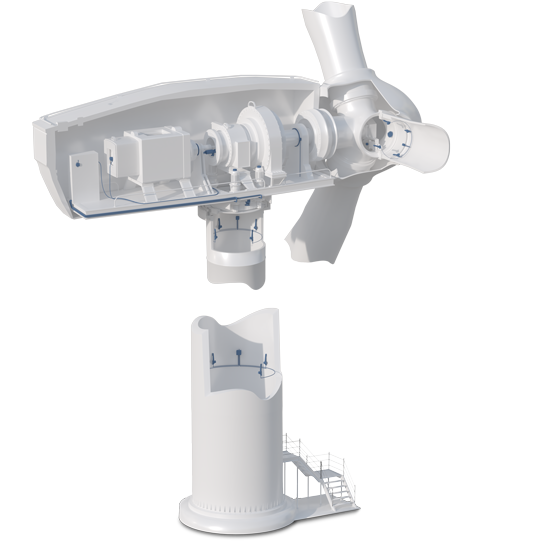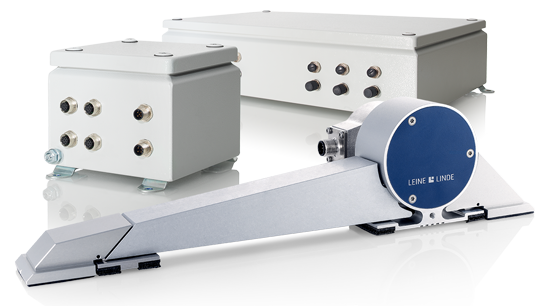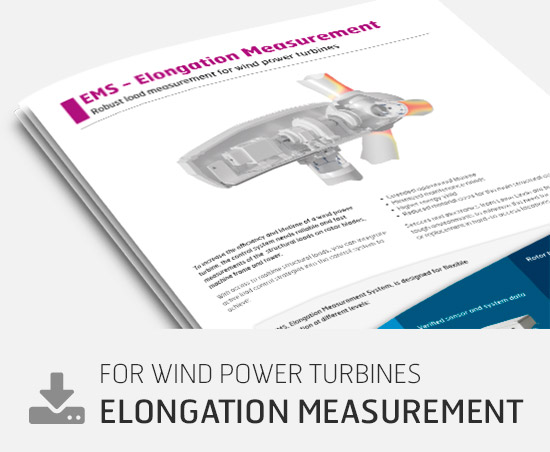
EMS, Elongation Measurement System, with basic modules
– fast and simple structural load monitoring thanks to sensor data preprocessing
The EMS, Elongation Measurement System, is capable to monitor loads on the rotor blade, machine frame, and tower of a wind turbine. It consists of a combination of strain sensors, a central evaluation unit, and optimized software applications. The system can be adapted to the size and complexity of the application.
The EMS with basic modules simplify load monitoring and calculation by help from verified sensor and system data. This data can be used to increase the availability and lifespan of wind turbines.
The supplied software basic modules offers the following functions:
- Plausibility check of the sensor data,
- Multi-point calibration of the sensor signals,
- Individual reactions to system errors,
- Monitoring of the material strain limits.
The EMS basic modules help reducing the development costs, thanks to pre-evaluated sensor data, supported rotor calibration and error handling. Monitoring the material strain limits is also possible with the basic module.
The hardware of the system is customized for the application with regard to the size and complexity, with a choice from some of the following products and components (see image). Install up to four strain sensors per every gateway to collect real-time strain measurement data. For the rotor blades, the gateways are connected to the process diagnostic box, the PDB, which is placed in the hub of the wind turbine. Strain sensors can also be connected via gateways from the lower and upper parts of the tower, to be part of this high-resolution strain and load measurement system.

Strain sensors in the rotor blades are connected via gateways to the PDB inside the hub.
Sensor data is converted to common fieldbus interfaces by help from Leine Linde compact robust CRG Gateways, or the versatile VRG Gateways. In a data processing unit, high-frequency strain data is collected, stored, and processed to derive meaningful information.
